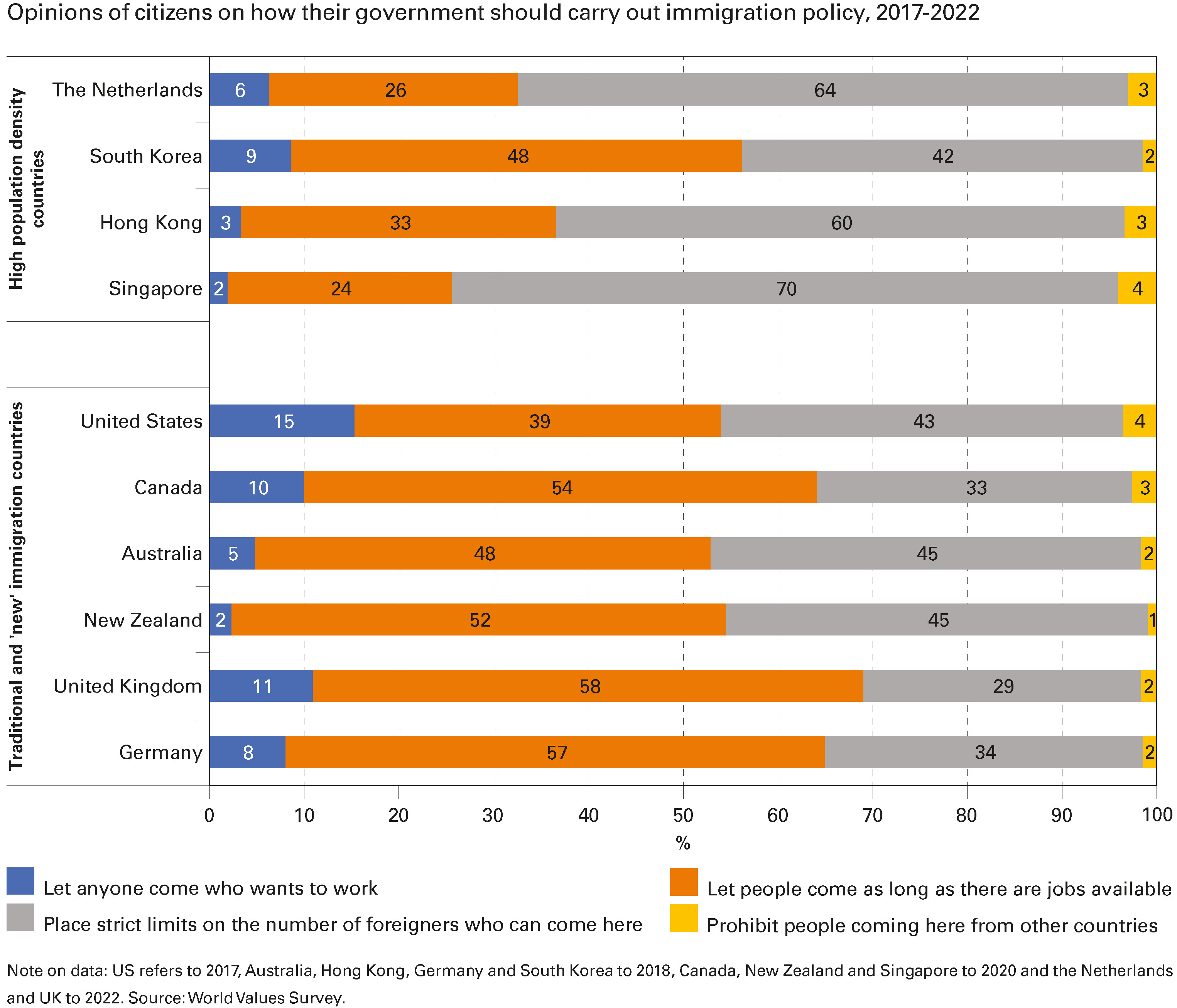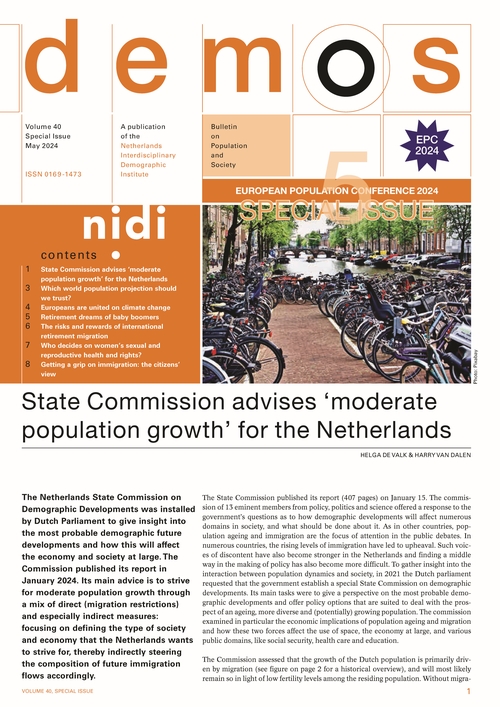Migration policy is a hotly debated issue in population issues. many developed countries. Some right-wing politicians view it as a boon, and some liberal politicians consider it a bane and the more nuanced politicians take the middle ground. Far-right politicians in particular often state that the borders should be closed. But what do citizens have to say on the topic? Are they likely to support such strong statements? And do the demographic circumstances of the country in question matter? Countries or city states with a high population density are likely to be more selective regarding who should cross their border than countries that are sparsely populated. High-density countries like the Netherlands or Singapore are likely to encounter more congestion problems in, for instance, housing, infrastructure, and land use, compared to low-density countries like Canada and the U.S.
How do citizens look upon the contribution of immigrants to their country and what is their stance on immigration policy, The World Values Survey offers some light on how country settings but also the attitudes of citizens may matter in welcoming or restricting immigrants. The figure below shows in a nutshell how citizens living in countries with a high population density differ from traditional and ‘new’ immigration countries.

In high-density countries, a majority of citizens wants strict limits on the number of foreigners entering their country. South Korean citizens differ markedly from the other three countries, but this might very well be because due to having the world’s lowest fertility rate of 0.7, the threats associated with population ageing loom large in South Korea’s future. The citizens in new and traditional immigration countries are far more focused on the labour market potential of immigrants and not on setting strict limits. They often do not face the complicating factors of a densely populated country. Canada, for example, with its current population of 40 million inhabitants (4 per km2) is striving for the goal of 100 million citizens in 2100. Canadian policy makers explained this goal in their ‘Century Initiative’: “Our population growth is tied to our quality of life. If we have more people, we have a larger workforce and we create more economic activity.” What is perhaps even more striking is the attitude in European countries, like Germany and the UK, where citizens show themselves to be very open to the labour market potential of immigrants. Population ageing and expected labour market shortages can apparently cause a change of heart. The Dutch viewpoint is markedly different: 67 per cent of the Dutch want strict limits and this is in strong contrast to the UK or Germany with respectively 31 and 36 per cent who want strict limits. Right now the Dutch, in particular the older citizens, feel that immigration numbers are ‘out of control’ and see it as high priority to regain control.
Harry van Dalen, NIDI-KNAW/University of Groningen and Tilburg University, e-mail: dalen@nidi.nl
Literature
- Haerpfer, C. et al. (2022), World Values Survey: Round Seven – Country-Pooled Datafile Version 5.0. Madrid, Spain & Vienna, Austria: JD Systems Institute & WVSA Secretariat.
- Van Dalen, H.P. (2023), Nederlanders behoudend over immigratie. Demos, 39 (9), pp. 1-4.


